Last Updated on July 19, 2024 by teamobn

One of the greatest challenges we are facing is how to get rid of MANY millions of tires every year.
Because tires are made of natural rubber and plastic, it’s easy to overlook how much they contribute to pollution. These are actually among the most common plastic polluters on earth. A 2017 study estimates that tires account for as much as 10 percent of overall microplastic waste in the world’s oceans.
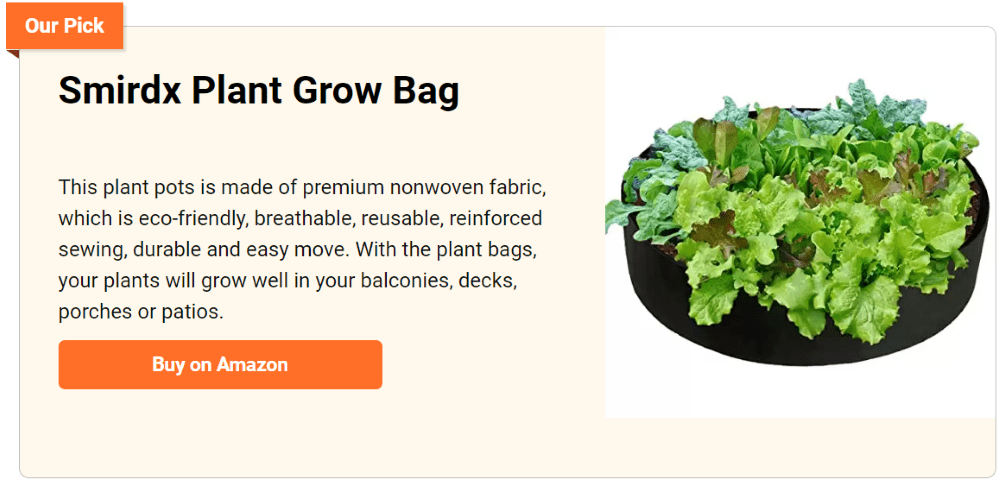
Here’s a great project to turn them into flower pots, instead.
All you need is a jigsaw to create this beautiful planter. Just make sure to clean it thoroughly before designing the exterior with paint.
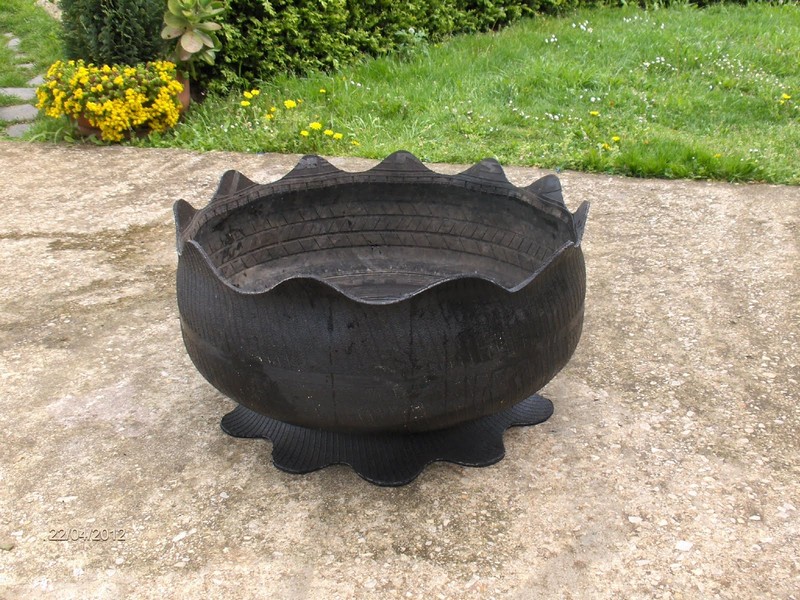
Making a Tire Planter
Plant flowers or herbs, but this could also be used to grow those that need deeper soil. 🙂
Materials
- Old Tire
- Enamel
Tools
- Old Nail Clippers
- Jigsaw
- Paintbrush
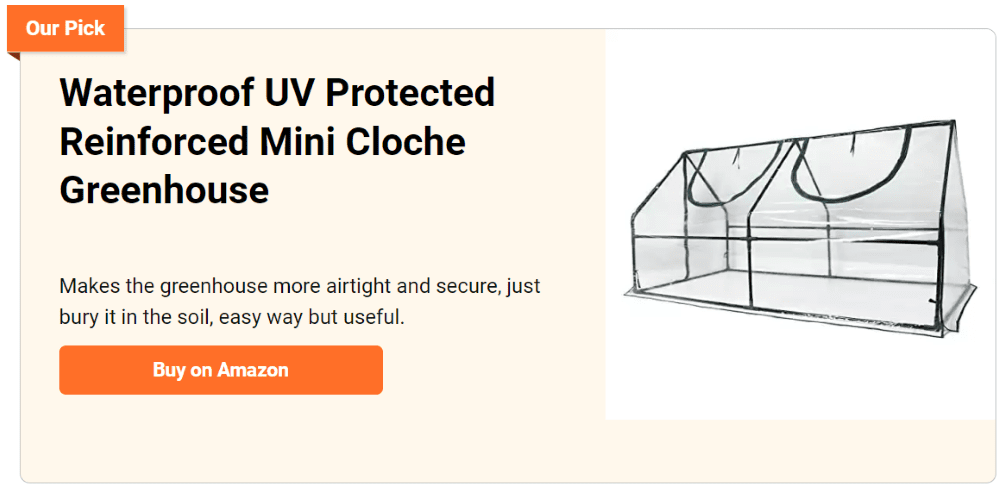
Instructions
1. Clean the tires with water for an easier cut.
2. To make the groove, nail some old pruning scissors, where we can insert the jigsaw blade.
3. Cut the sides evenly with a wavey style or according to your preferred style.
4. Remove one of the waves and step on it until it is flat. The removed part will be the base of the pot.
5. Wash, let it dry, and paint with your desired design using outdoor enamel paint.
Click on any image to start the lightbox display. Use your Esc key to close the lightbox. You can also view the images as a slideshow if you prefer 😎
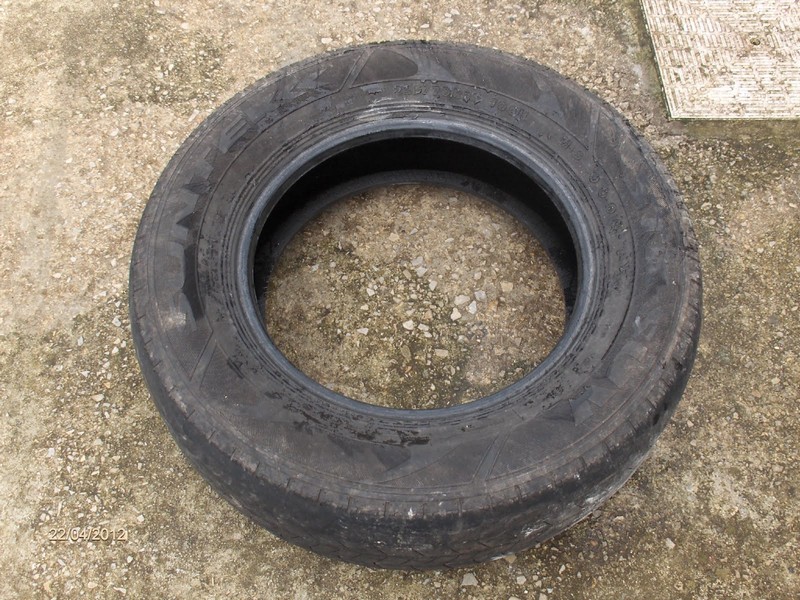
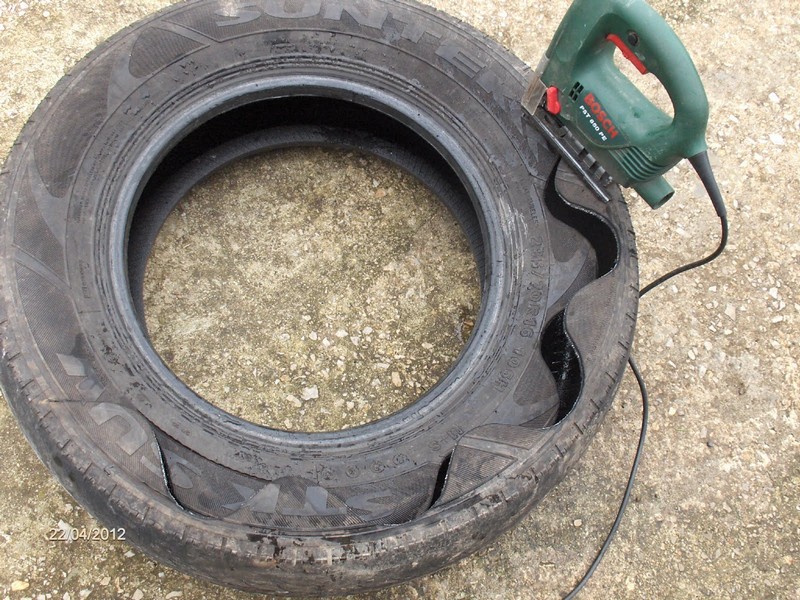
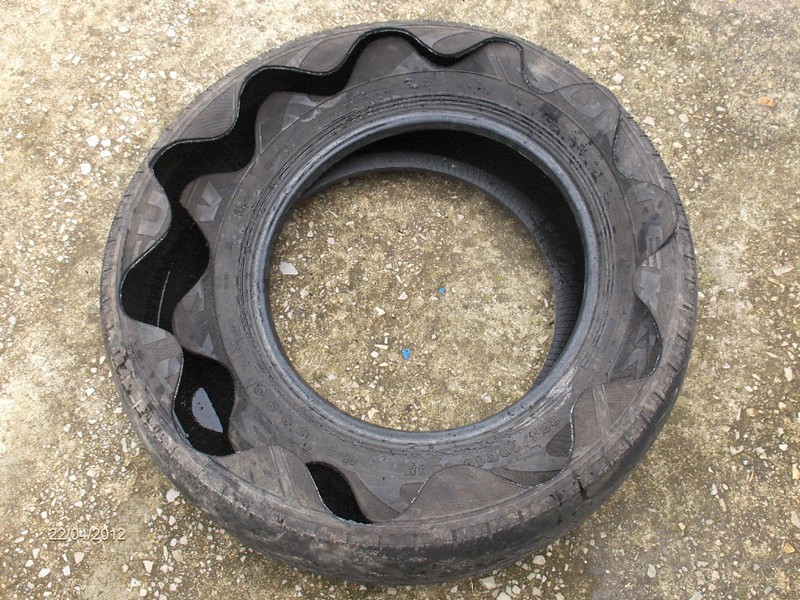
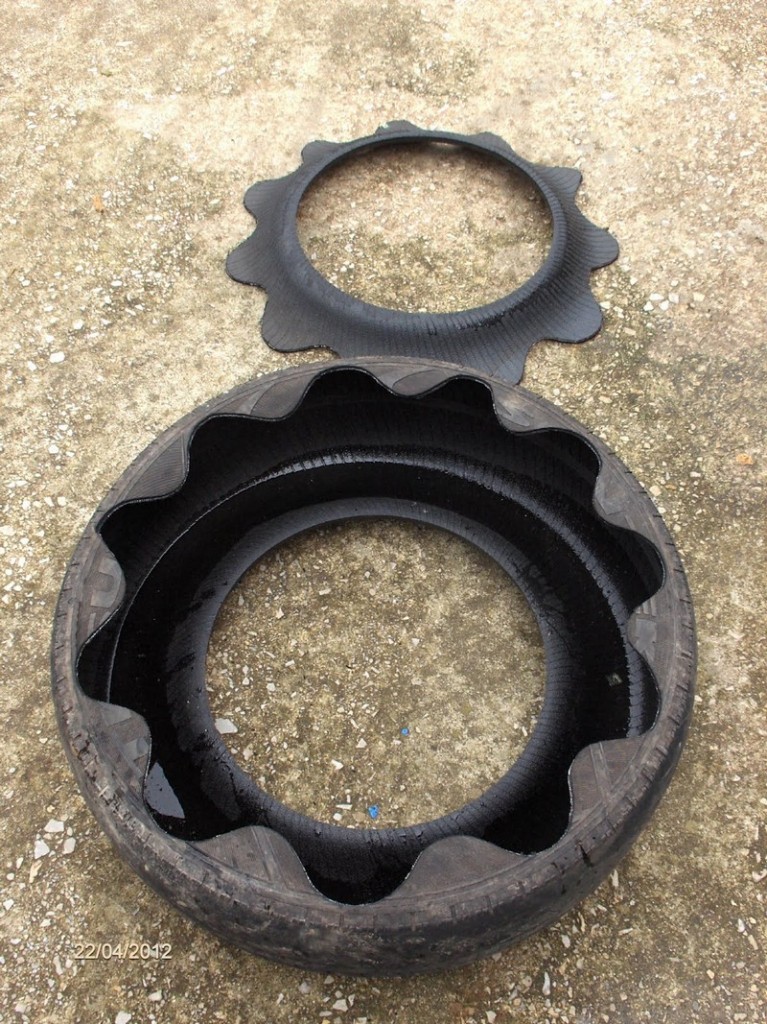
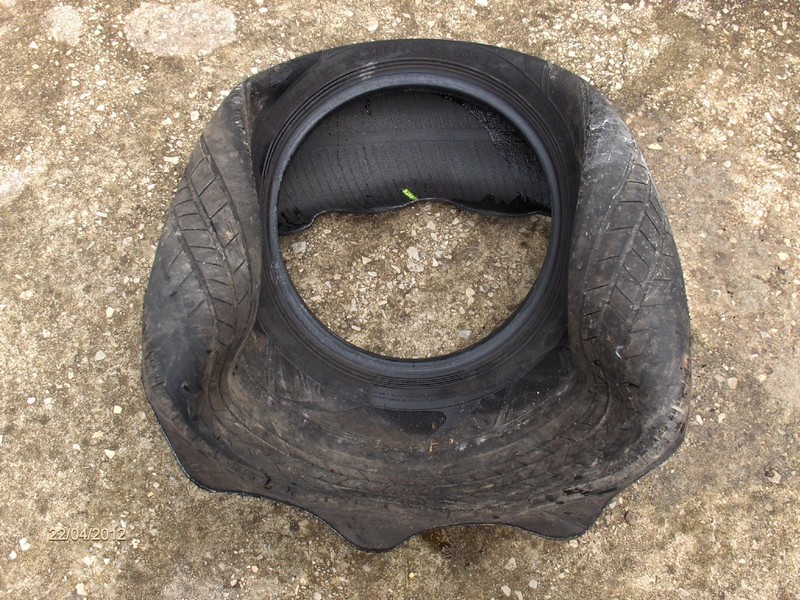
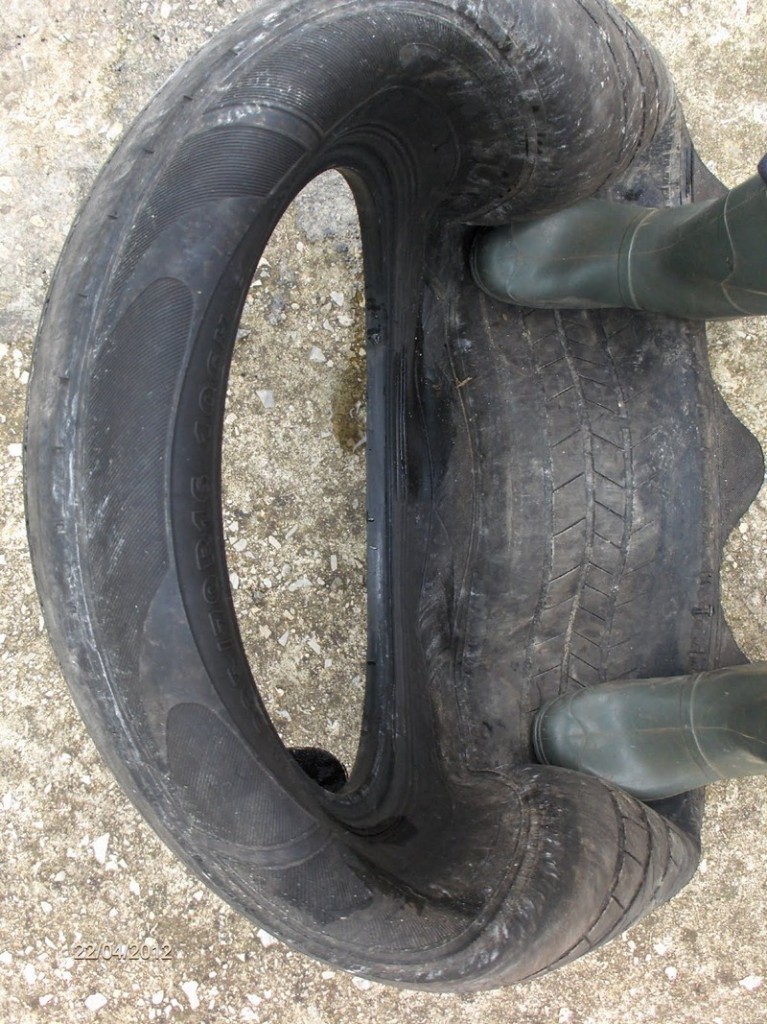
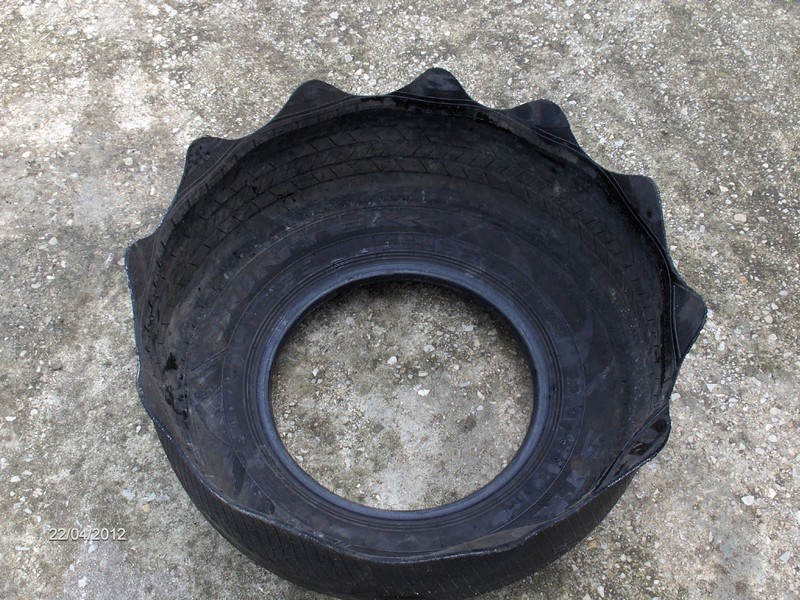

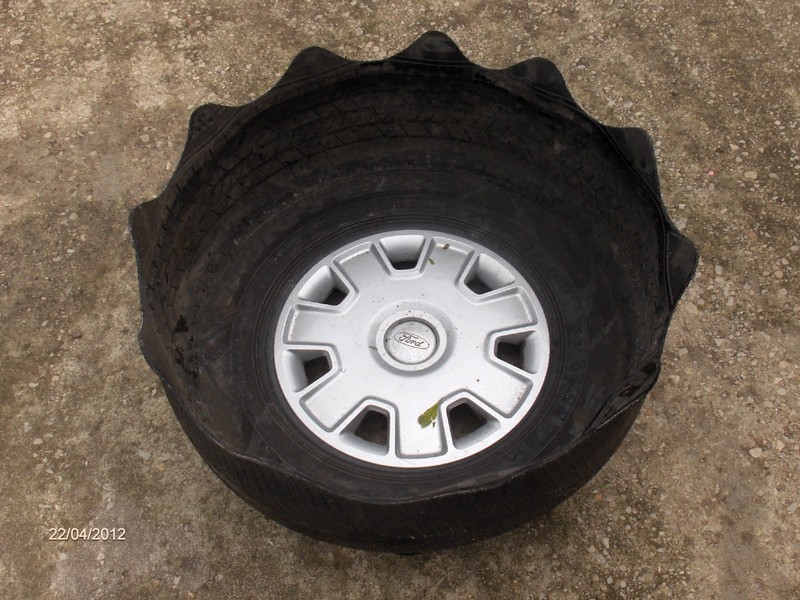
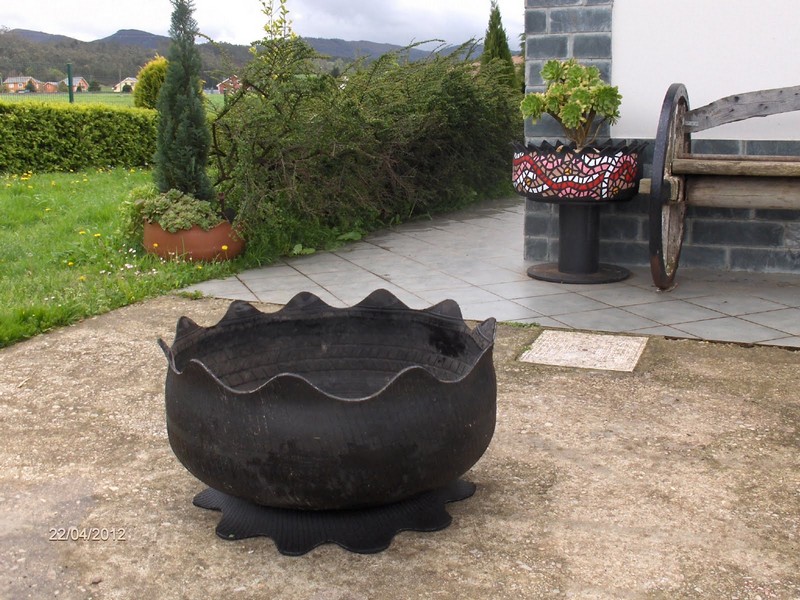
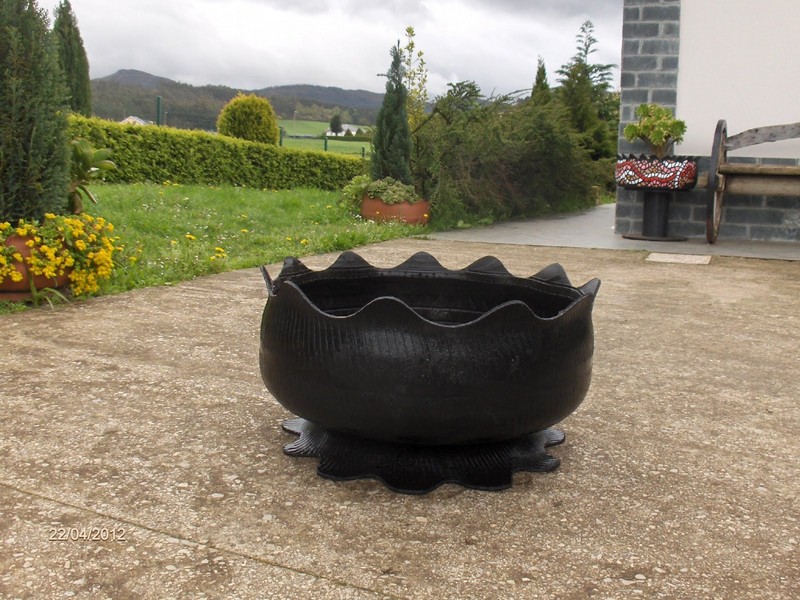
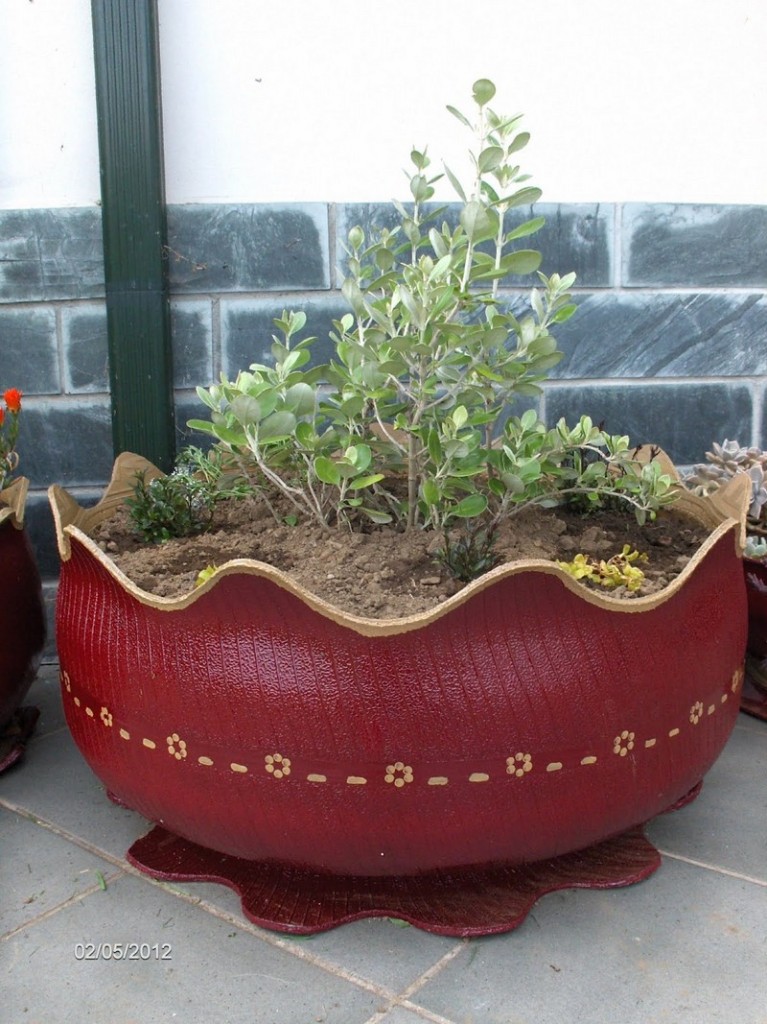
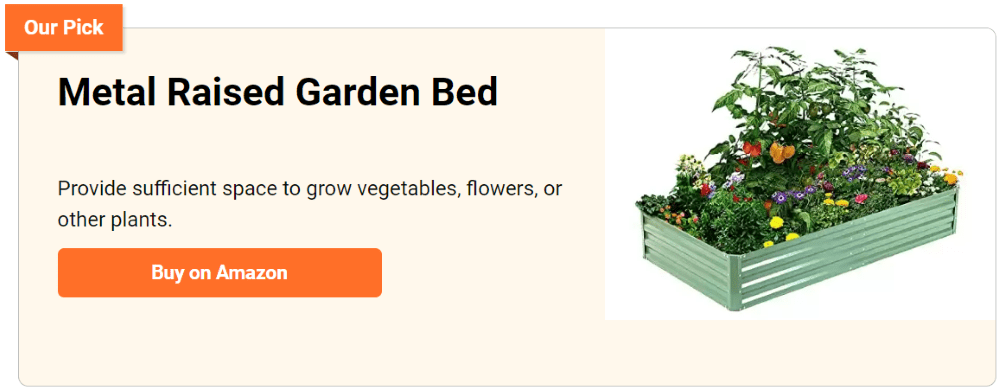
Thanks to Aprender Observando for this great project. You can get the step-by-step instructions here…
Choosing the Right Plants for Tire Planters
Choosing the right plants for your tire planter is crucial to ensure that your garden thrives. These planters offer a unique environment for plants, with specific considerations for space, soil depth, and drainage. Here’s how you can select the best plants that will flourish in a tire planter.
Ideal Plants for Shallow Rooted Varieties
Many herbs and small flowering plants are well-suited for tire planters due to their minimal root space requirements. Herbs like basil, cilantro, or chives are perfect as they grow easily and don’t need deep soil to prosper. These herbs also contribute a delightful fragrance to your garden, enhancing the sensory appeal of your tire planter.
Additionally, small flowering plants like marigolds, pansies, and petunias can add a splash of color to your setup, making the tire planter both functional and aesthetically pleasing. These plants are not only easy to maintain but also help attract beneficial insects to your garden.
Best Plants for Deep Rooted Varieties
For those who have modified their tire planters to accommodate deeper soil, a variety of vegetables and even some small fruit bushes can be considered. Vegetables like carrots, beets, and small potatoes thrive as the deep soil allows their roots to develop without constraint.
Radishes, with their rapid growth cycle, are particularly well-suited for this kind of planter. Additionally, consider small fruit plants like strawberries, which can benefit from the soil depth while their trailing vines drape beautifully over the sides of the tire. Providing enough depth and proper soil nutrition in your tire planter ensures these plants grow healthy, leading to a more productive and visually appealing garden.
Plants That Thrive in Well-Drained Soil
The natural structure of tire planters promotes excellent drainage, making them an ideal choice for plants that require dry, well-drained soil conditions. Succulents are particularly suited for this environment as they require minimal water and thrive in the contained space of a tire. Lavender and rosemary, with their preference for drier conditions, also flourish here.
These plants not only survive but thrive in the drainage conditions provided by tire planters. Their robust nature and minimal water needs make them easy to care for while adding a unique texture and rich color to the garden. Their aromatic properties can also transform your tire planter into a fragrant oasis, enhancing the ambiance of your outdoor space.
By selecting the right plants for your tire planter, you’re ensuring that your garden will not only survive but thrive. Whether you’re planting herbs, vegetables, or decorative plants, the key is to understand the needs of the plants in relation to the conditions provided by the tire planter.
Decorating Your Tire Planter
Decorating your recycled tires can transform them into stunning focal points in your garden or patio. Here’s how to unleash your creativity and add a personal touch to these versatile containers.
Choosing the Right Paint
First, choose a strong outdoor enamel paint resistant to environmental factors. While earth tones mix naturally with outdoor settings, bright hues such as aqua, yellow, or lime green can provide a strong accent. Always apply a primer first to guarantee greater adherence and a longer-lasting finish.
Creative Designs and Patterns
Think about personalizing your planters with motifs or patterns once your base coat is down. Creating consistent forms like stars, stripes, or floral designs is perfect using stencils. Create geometric shapes with painters’ tape for a more freehand approach. Clear coatings of weather-resistant sealer will help guard your artwork against water damage and fading.
Adding Decorative Elements
Attaching outside embellishments like mosaic tiles for a bit of elegance or rope handles for a rustic appeal will help to improve your planter even more. Additionally, you might affix little metal or wooden labels bearing the names of the herbs or plants you are cultivating. These little details improve the use as well as the appearance of your planters.
These guidelines will help you to quickly personalize your planters to fit your taste and give your garden some unique character. There are countless options whether your taste is for a simple design or a mixed-media combination of colors and textures.
Decorating Your Tire Planter
Decorating your recycled tires can transform them into stunning focal points in your garden or patio. Here’s how to unleash your creativity and add a personal touch to these versatile containers.
Choosing the Right Paint
First, choose a strong outdoor enamel paint resistant to environmental factors. While earth tones mix naturally with outdoor settings, bright hues such as aqua, yellow, or lime green can provide a strong accent. Always apply a primer first to guarantee greater adherence and a longer-lasting finish.
Creative Designs and Patterns
Think about personalizing your planters with motifs or patterns once your base coat is down. Creating consistent forms like stars, stripes, or floral designs is perfect using stencils. Create geometric shapes with painters’ tape for a more freehand approach. Clear coatings of weather-resistant sealer will help guard your artwork against water damage and fading.
Adding Decorative Elements
Attaching outside embellishments like mosaic tiles for a bit of elegance or rope handles for a rustic appeal will help to improve your planter even more. Additionally, you might affix little metal or wooden labels bearing the names of the herbs or plants you are cultivating. These little details improve the use as well as the appearance of your planters.
These guidelines will help you to quickly personalize your planters to fit your taste and give your garden some unique character. There are countless options whether your taste is for a simple design or a mixed-media combination of colors and textures.
Regular Cleaning
Keep your planters clean to prevent dirt buildup and potential pest infestations. Wash the exterior with soapy water and a brush every few months to keep the paint fresh and vibrant. For the interior, removing old soil and replacing it annually can help prevent disease buildup and refresh the nutrients available to your plants.
Monitoring Drainage
Proper drainage is crucial to prevent waterlogging, which can damage plant roots. Make sure the drainage holes at the bottom of the tire are clear and unobstructed. If you notice water pooling, consider elevating the tire or adding more drainage holes to improve water flow.
Checking for Wear and Tear
Inspect your planters regularly for signs of wear or damage, such as cracks or fading paint. Addressing these issues promptly can extend the life of your planters. If the paint starts to chip, a touch-up or new coat may be needed to protect the rubber from degrading and to keep the planter looking new.
Seasonal Adjustments
Adjust the location of your tire planters based on seasonal conditions. In areas with harsh winters, consider moving them to a sheltered location to protect the integrity of the tire and the health of the plants. In summer, make sure your plants are positioned to receive the right amount of sunlight, and consider shading them during the hottest part of the day to prevent overheating.
Conclusion
Creating tire planters is a great approach to recycle old tires and give your garden some original flair. This project lets you investigate artistic designs and patterns in addition to assist cut trash. These planters can become a dynamic component of your outdoor area with the correct plants and upkeep. Accept this environmentally friendly project to improve the looks of your garden and help the surroundings.
If you liked this project, you will also like viewing these easy DIY projects…








